A few months back, Colin and I did a side-by-side online sculpting demo. For my part, I chose to work from photographs of one of our favorite models. Believe it or not, she was resting in this position between poses. I happened to glance over and just about lost my mind. “Wait! Please don’t move – stay right where you are!” I exclaimed and snapped many pics of this most curious and intriguing pose.

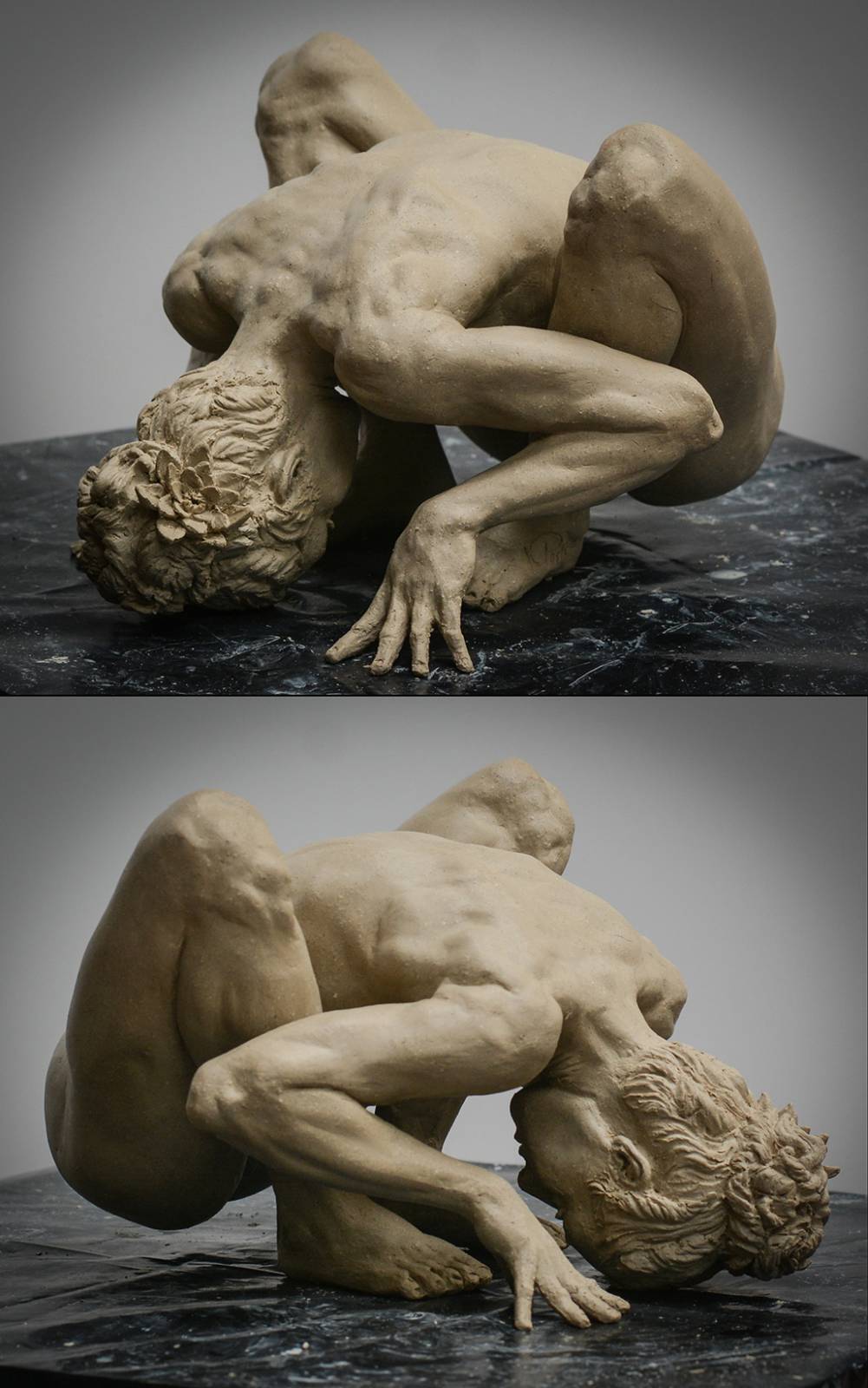
This clay body (Laguna’s Dark Horse) is dark red when wet, but when fired in oxidation, it turns this delightful black color with a very light sprinkle of dots from the grog in the clay. It transitions to this color with no additional treatment (no glaze, slip, under-glaze or colorants). So Frogster got to stay as she was out of the kiln.
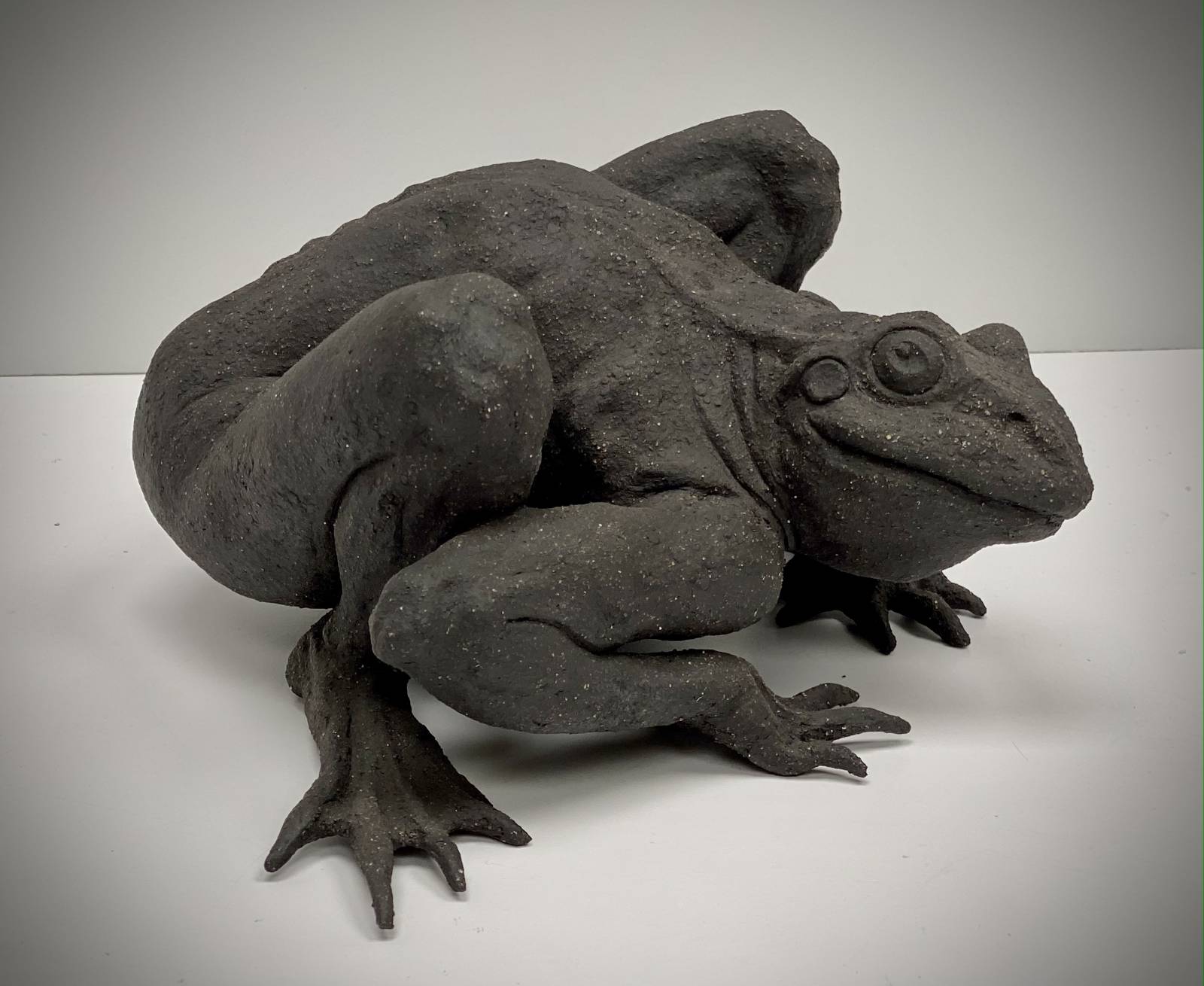

We used acrylic paint. Given that acrylics often tend to get shiny plasticky in thicker applications (not to our taste on sculpture) and our preference is to avoid any surface on a sculpture being one solid color, we opted to use a splatter-stipple technique.
We began by creating a foundation layer by splattering paint using brushes, spray bottles and (this worked the most effectively) a stiff bristled vegetable brush. This very much has the feel of a toothbrush, just a big toothbrush that can spray more paint more rapidly.
After getting a good base coat, we use a our very best selection of crappy old brushes. The bristles are splayed so as to leave wonderfully random stipple patterns which we use to shift the colors, refine transitions and break up larger splashes. These are actually perfect for this task and live in their own very special spot in the brush cabinet. Colin also uses a small spray gun to even out, shift and soften colors and transitions. As the paint is being atomized during this part of the process, we only use colors with a non-toxic rating.
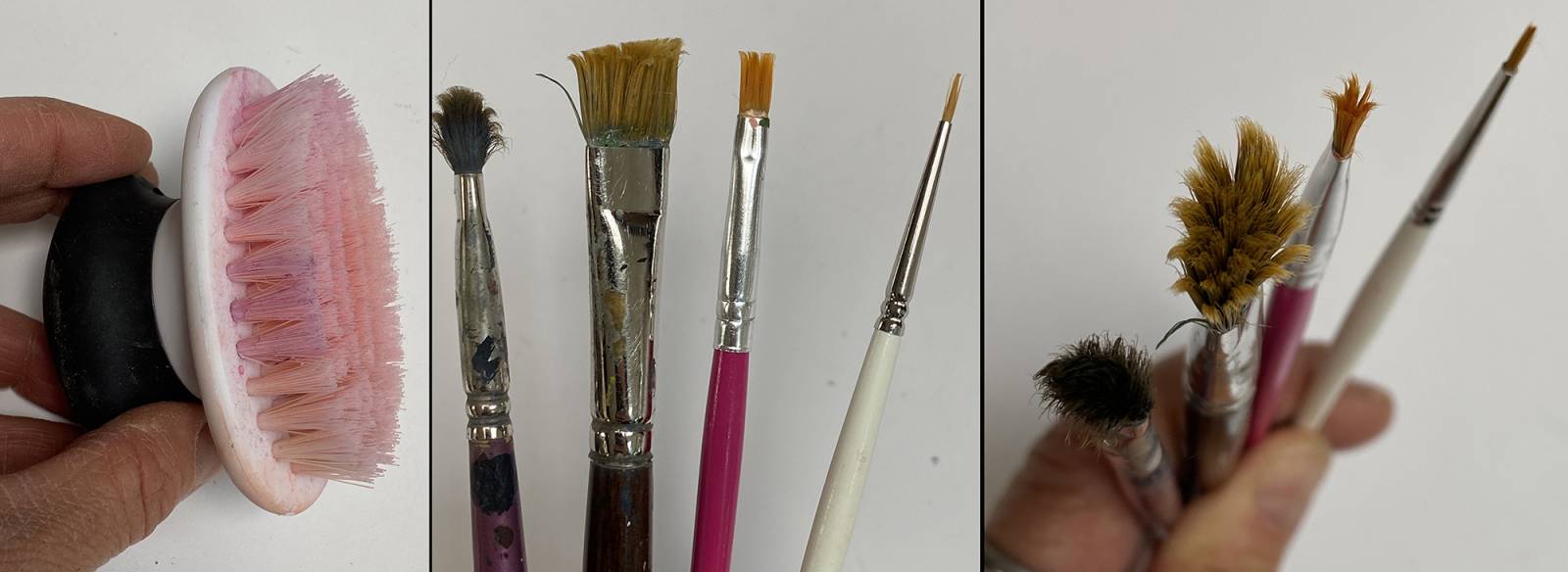
This second short video shows how the colors shift throughout the process.
We enlarged the inspiration photo and used it as a backdrop for our photoshoot, playing on the frog feeling of the pose. I love how she looks like a little human-amphibian sitting under her lotus flower.


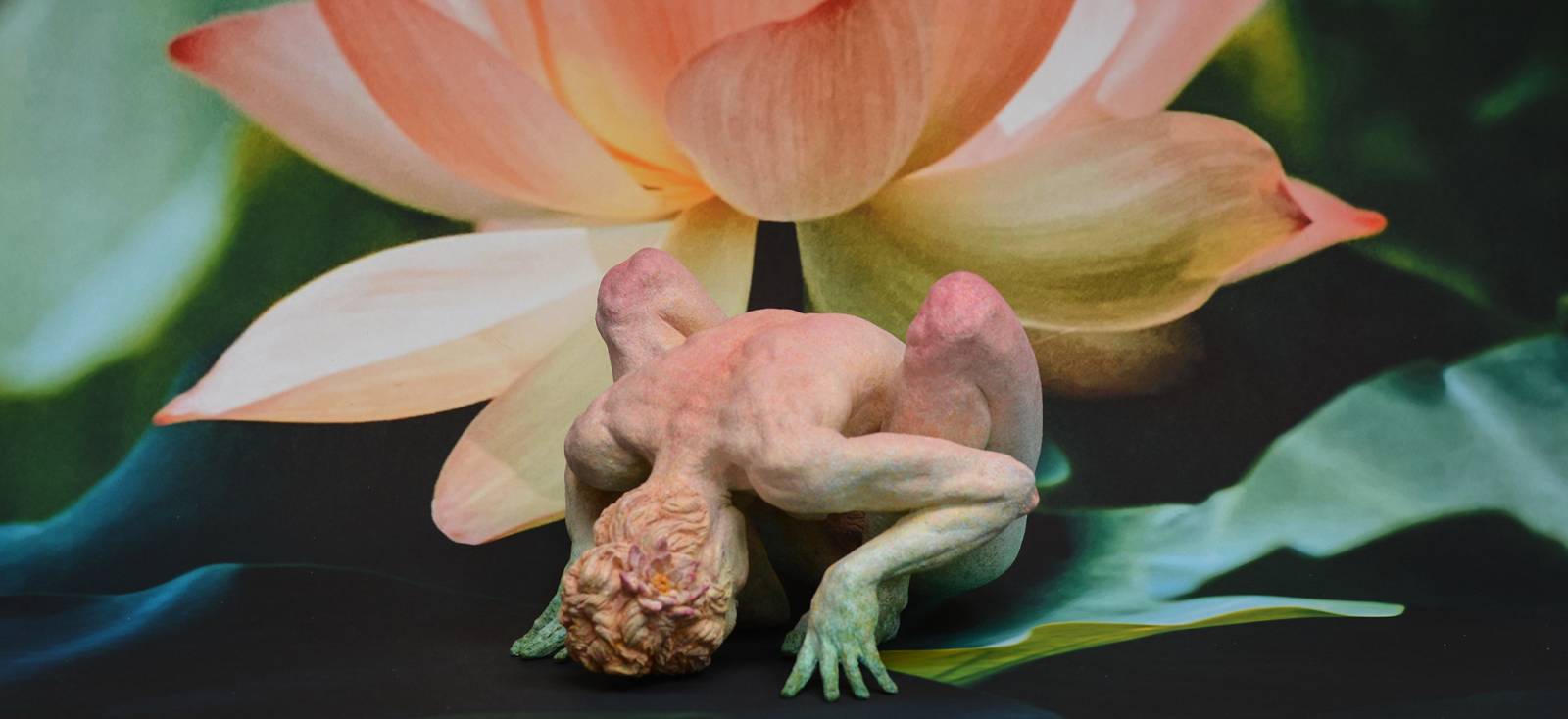
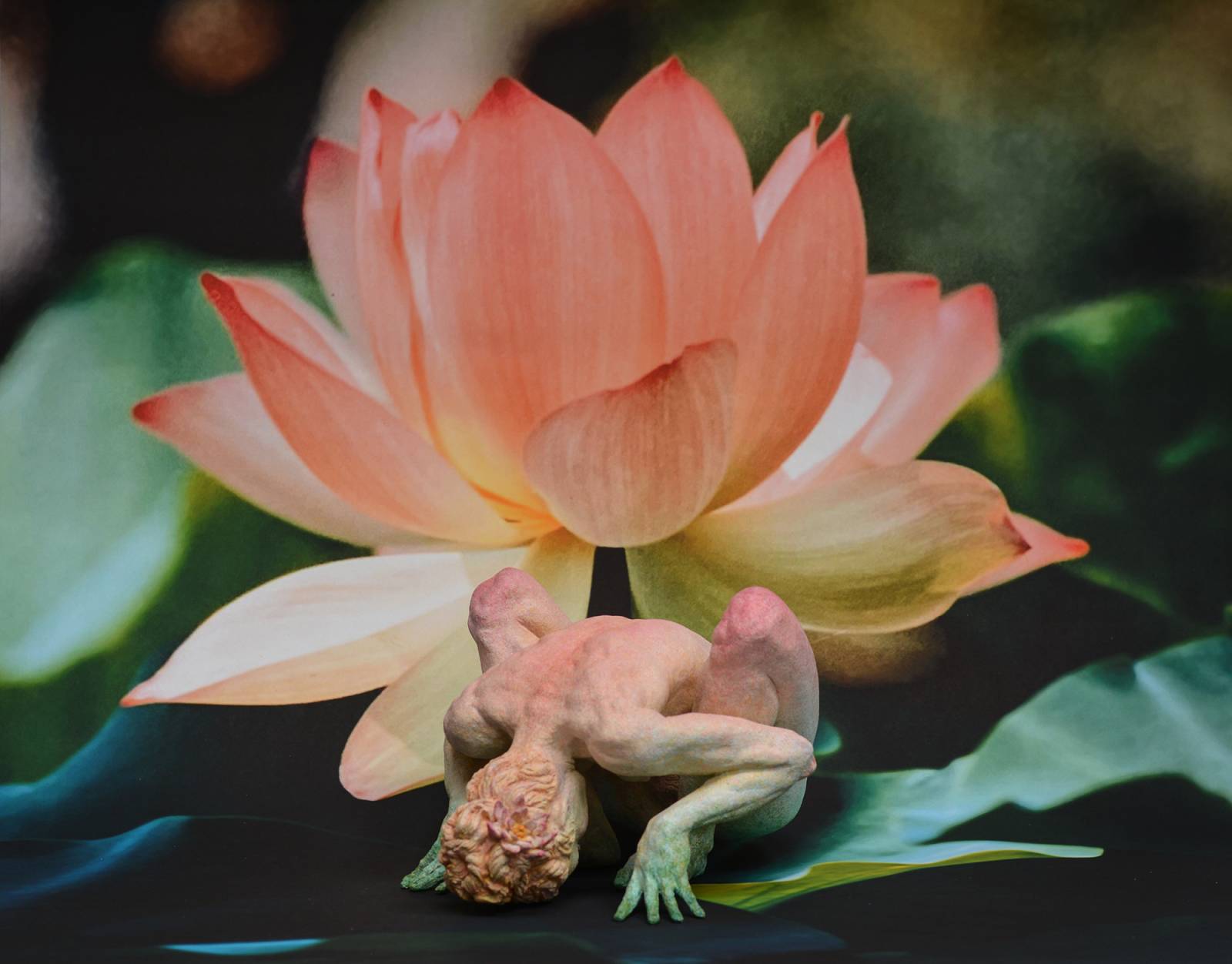
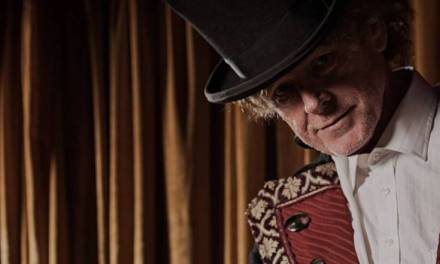
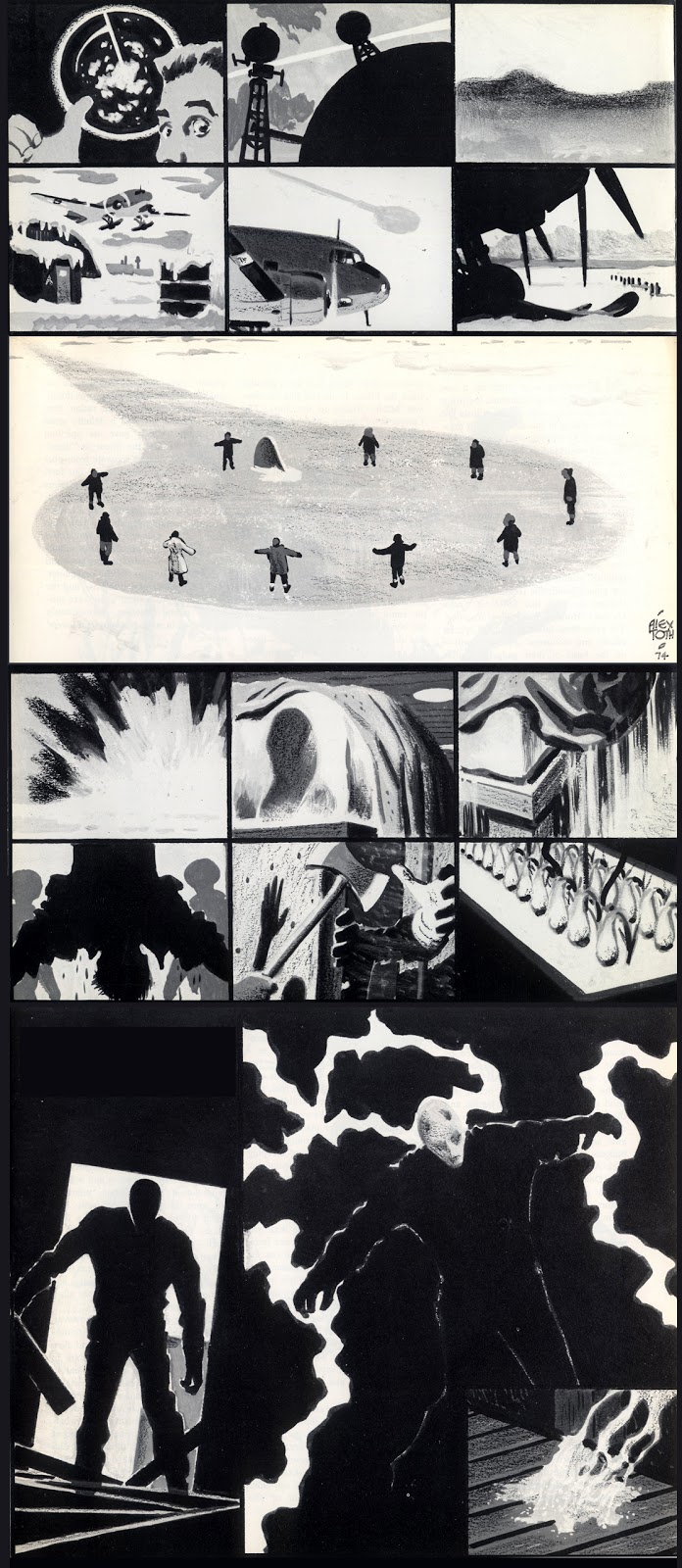
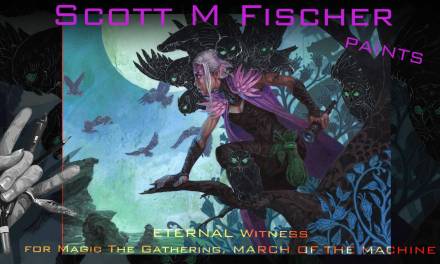
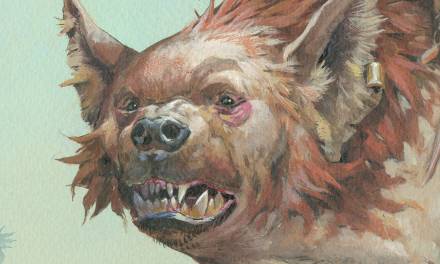

Recent Comments